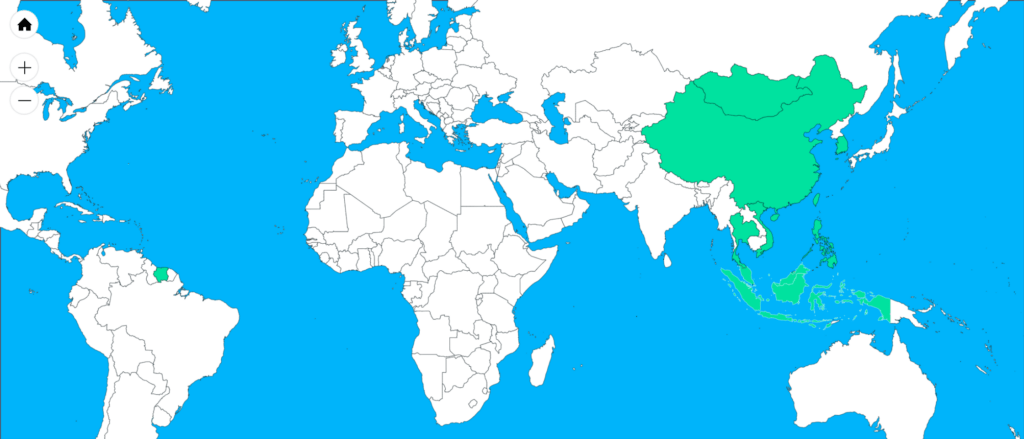Origins of The Celebration and Its Implication for The Global Economy
The Chinese New Year, also known as the Spring Festival, is a major holiday that has been celebrated for thousands of years in China and other parts of Asia. The origins of the holiday can be traced back to ancient China when the Chinese people celebrated the end of the winter and the arrival of spring.
The Chinese New Year has a significant impact on the global economy, as it is the largest human migration on Earth, with millions of people traveling to their hometowns to be with their families. This mass movement of people has a significant impact on the logistics industry, as it can cause delays and disruptions in supply chains.
In addition, many factories and businesses shut down for the holiday, leading to a temporary halt in production and a backlog of orders. This can cause disruptions in the global supply chain and affect the delivery of goods. The economy of many countries, particularly those heavily dependent on exporting to China, are affected by the Chinese New Year.

Chinese New Year Challenges for the Freight Forwarders
The Chinese New Year is one of the busiest times of the year for freight forwarders and logistics companies, as many factories in China shut down for the holiday, causing disruptions in the global supply chain.
Some of the main struggles that freight forwarders face during this time include:
- Factory closures: Many factories in China shut down for a period of time during the Chinese New Year, which can cause delays in the production and shipment of goods. This can result in missed delivery deadlines and increased inventory costs for businesses that rely on Chinese-made products.
- Labor shortages: As many workers in China return to their hometowns for the holiday, there may be a shortage of labor available to load and unload cargo, which can slow down the movement of goods.
- Congestion at ports and airports: With many factories closing down at the same time, there can be a surge in demand for shipping and air freight services, leading to increased congestion at ports and airports. This can cause delays in the handling and clearance of cargo.
- Higher prices: Due to the increased demand for freight services during this time, carriers may raise their prices to take advantage of the market conditions. This can result in higher costs for businesses that rely on imports and exports.
- Limited stock availability: With many factories closed during Chinese New Year, the availability of certain products may be limited. It can be hard to plan the inventory if it’s not sure when production will resume.

What’s Expected This Year?
The 2023 Chinese New Year has come with a different perspective in comparison with previous years. Due to the conflict in Ukraine, high worldwide inflation rates, and overstocked companies. Freight Forwarders can find low freight rates, much more container space at vessels, and fewer difficulties. This year the holiday will be celebrated between January’s 22nd and February’s 9th.
It remains to be seen how far the freight rates will continue to fall and the implications this will bring to carriers, shippers and any agent in the supply chain.
If you want to know more about the logistics industry in 2023 read our forecast.
How Digital Tools Can Help Freight Forwarders Prepare for Future Challenges?
One of the main challenges faced by freight forwarders during this time is the surge in demand for transportation and logistics services. Digital tools, such as transportation management systems (TMS) and enterprise resource planning (ERP) systems, can help freight forwarders to better manage and plan their operations during this period. Automating processes such as route optimization, demand forecasting, and inventory management, these tools can help companies to increase efficiency, reduce costs, and improve delivery times.
Digital tools like Cargofive can help freight forwarders prepare for challenges like the ones that come with the Chinese new year. Freight forwarders traditionally take 1-2 weeks to book a shipment for their clients. Cargofive gives freight forwarders total visibility of sea freight rates and improves freight forwarders’ pricing process up to a 90% of the time usually takes with less mistakes.
In conclusion, digital tools can play an important role in addressing the challenges that come with the Chinese New Year and the logistics industry. By automating processes, improving visibility, and forecasting demand, freight forwarders can better manage their operations and minimize disruptions in the supply chain.
To read more about why logistics operators should invest in digital tools read this article
How Can Freight Forwarders Get Ready for The Chinese New Year?
There are several things that freight forwarders can do to prepare for the Chinese New Year and minimize disruptions in the supply chain.
These include:
- Planning ahead: Freight forwarders should start planning for the Chinese New Year well in advance, by forecasting demand, identifying potential bottlenecks, and making arrangements with suppliers and customers.
- Increasing resources: Freight forwarders should increase their staffing and resources during this period, to ensure that they can handle the surge in demand for transportation and logistics services.
- Coordinating schedules: Freight forwarders should work closely with their suppliers and partners to coordinate schedules and ensure smooth delivery of goods.
- Communicating with customers: Freight forwarders should keep customers informed about any potential delays or disruptions, and work to find solutions that minimize their impact.
- Implementing digital tools: Freight forwarders can use digital tools such as transportation management systems, enterprise resource planning systems, and Supply Chain Management software to automate processes and improve visibility, which can help to minimize disruptions and ensure that goods are delivered on time.
- Being flexible: The Chinese New Year is a time of uncertainty and freight forwarders should be prepared for unexpected changes, be flexible and find a way to adapt to the situation.
- Being proactive: Freight forwarders can also take a proactive approach to minimize disruptions by preparing contingency plans, finding alternative routes, and hedging against currency fluctuations and other risks.
By taking these steps, freight forwarders can be better prepared for the Chinese New Year and minimize disruptions in the supply chain, which can help to ensure that goods are delivered on time and customer satisfaction is maintained.
Map of Countries that Celebrate The Chinese New Year

The Chinese New Year is a public holiday in the following countries:
- Brunei
- China
- Hong Kong
- Indonesia
- Macau
- Malaysia
- Mongolia
- Philippines
- Singapore
- South Korea
- Suriname
- Taiwan
- Thailand
- Vietnam
AUTHOR



